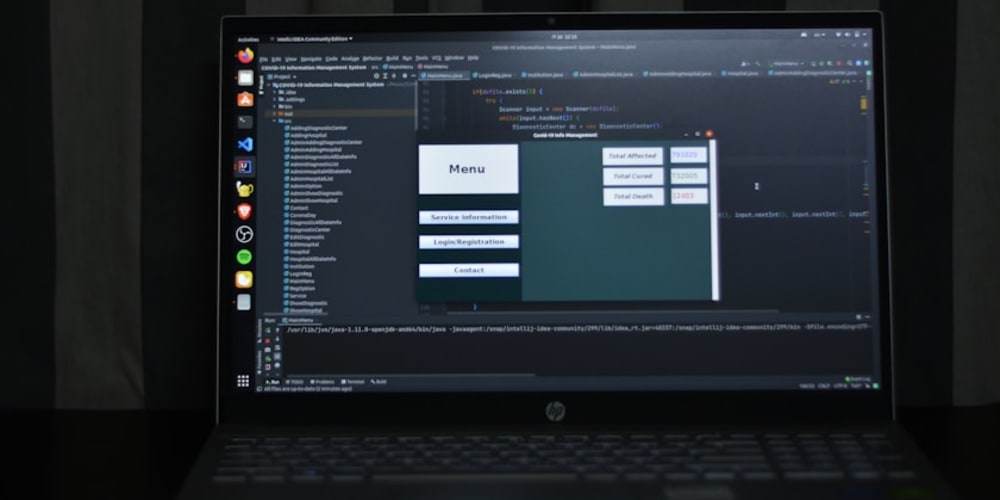Counting Substrings with All Three Characters
In the world of computer science and algorithms, string manipulation is a fundamental task. One common problem involves counting the number of substrings within a given string that contain all three specific characters. This problem arises in various applications, including bioinformatics, text analysis, and data mining.
This article delves into the complexities of this problem, exploring efficient algorithms and techniques to solve it. We'll cover different approaches, provide step-by-step explanations, and illustrate concepts with practical examples. Let's embark on a journey to understand how to efficiently count substrings containing all three characters.
Introduction
The problem of counting substrings containing all three specific characters is a classic string manipulation task. It can be phrased as follows: given a string S and three distinct characters a , b , and c , find the number of substrings of S that contain at least one instance of each of a , b , and c .
For example, consider the string "abcabcbb". If we are looking for substrings containing characters 'a', 'b', and 'c', we would find the following substrings: "abcabc", "abcabcbb", "bcabc", "bcabcbb", "cabc", "cabcbb", and "abc". There are seven substrings in total that satisfy the given condition.
This problem has relevance in various fields, including:
- Bioinformatics: Identifying DNA sequences containing specific nucleotide triplets.
- Text Analysis: Finding words or phrases containing specific characters or patterns.
- Data Mining: Extracting patterns from data that involve specific combinations of attributes.
Approaches to Counting Substrings
Several approaches can be employed to solve the problem of counting substrings containing all three characters. We will focus on two primary methods: the naive approach and the sliding window technique.
1. Naive Approach
The simplest approach is to generate all possible substrings of the given string S and check if each substring contains all three characters. This can be done by iterating through each starting position and ending position within the string, generating all substrings and checking for the presence of a , b , and c .
Here's a Python code snippet illustrating this approach:
def count_substrings_naive(s, a, b, c):
"""
Counts the number of substrings containing all three characters using a naive approach.
Args:
s: The input string.
a: The first character.
b: The second character.
c: The third character.
Returns:
The number of substrings containing all three characters.
"""
count = 0
for i in range(len(s)):
for j in range(i + 1, len(s) + 1):
substring = s[i:j]
if a in substring and b in substring and c in substring:
count += 1
return count
# Example usage
s = "abcabcbb"
a = 'a'
b = 'b'
c = 'c'
result = count_substrings_naive(s, a, b, c)
print(f"Number of substrings: {result}") # Output: 7
While straightforward, the naive approach has a time complexity of O(n 3 ), where n is the length of the string. This is because it iterates through all possible substrings, resulting in a significant performance bottleneck for large strings.
2. Sliding Window Technique
The sliding window technique provides a more efficient solution. It utilizes a window that slides across the string, keeping track of the characters encountered within the window. The window is expanded or contracted based on the presence or absence of the required characters.
Here's a Python code snippet illustrating the sliding window technique:
def count_substrings_sliding_window(s, a, b, c):
"""
Counts the number of substrings containing all three characters using a sliding window.
Args:
s: The input string.
a: The first character.
b: The second character.
c: The third character.
Returns:
The number of substrings containing all three characters.
"""
count = 0
start = 0
found_a = False
found_b = False
found_c = False
for end in range(len(s)):
if s[end] == a:
found_a = True
if s[end] == b:
found_b = True
if s[end] == c:
found_c = True
if found_a and found_b and found_c:
count += end - start + 1 # Count all substrings ending at end
while s[start] != a or s[start] != b or s[start] != c:
if s[start] == a:
found_a = False
if s[start] == b:
found_b = False
if s[start] == c:
found_c = False
start += 1
return count
# Example usage
s = "abcabcbb"
a = 'a'
b = 'b'
c = 'c'
result = count_substrings_sliding_window(s, a, b, c)
print(f"Number of substrings: {result}") # Output: 7
The sliding window technique optimizes the process by keeping track of the characters within the window and efficiently updating it. This reduces the time complexity to O(n), making it significantly faster than the naive approach for large strings.
Example
Let's consider a more complex example: "abcabcbbccccaaa". We want to count substrings containing 'a', 'b', and 'c'.
Using the sliding window technique, we'll iterate through the string and update the window as follows:
- Start: "ab" (found 'a' and 'b')
- Expand: "abc" (found 'c', valid substring)
- Expand: "abca" (still valid)
- Expand: "abcab" (still valid)
- Expand: "abcabc" (still valid)
- Expand: "abcabcbb" (still valid)
- Expand: "abcabcbbccc" (still valid)
- Expand: "abcabcbbcccca" (still valid)
- Expand: "abcabcbbccccaa" (still valid)
- Expand: "abcabcbbccccaaa" (still valid)
- Contract: "bcabcbbccccaaa" (removing 'a', still valid)
- Contract: "cabcbbccccaaa" (removing 'b', still valid)
- Contract: "abcbbccccaaa" (removing 'c', still valid)
- Contract: "bcbbccccaaa" (removing 'a', still valid)
- Contract: "cbbccccaaa" (removing 'b', not valid, restart window)
Following this process, we would count the number of valid substrings. In this case, we would find multiple valid substrings, each contributing to the final count.
Conclusion
Counting substrings containing all three characters presents a challenging string manipulation problem. While the naive approach provides a basic solution, the sliding window technique emerges as a significantly more efficient method with a time complexity of O(n). This technique excels in handling large strings by dynamically updating a window based on the presence of required characters.
Understanding and implementing the sliding window technique for this problem can provide valuable insights into string manipulation algorithms and their applications in various fields. By mastering this technique, you'll be equipped to tackle similar string-based challenges with efficiency and accuracy.
Further Exploration
To deepen your understanding of this topic, consider exploring the following areas:
- Generalizing the Problem: Adapt the sliding window technique to handle more than three characters.
- Variations: Explore counting substrings that contain all three characters exactly once.
- Applications: Research how this problem is used in real-world applications, such as DNA analysis or text mining.


















